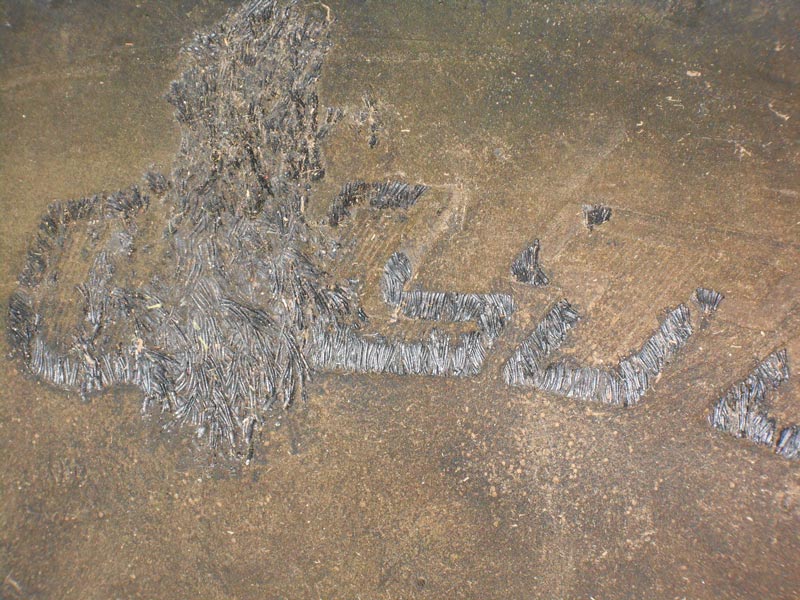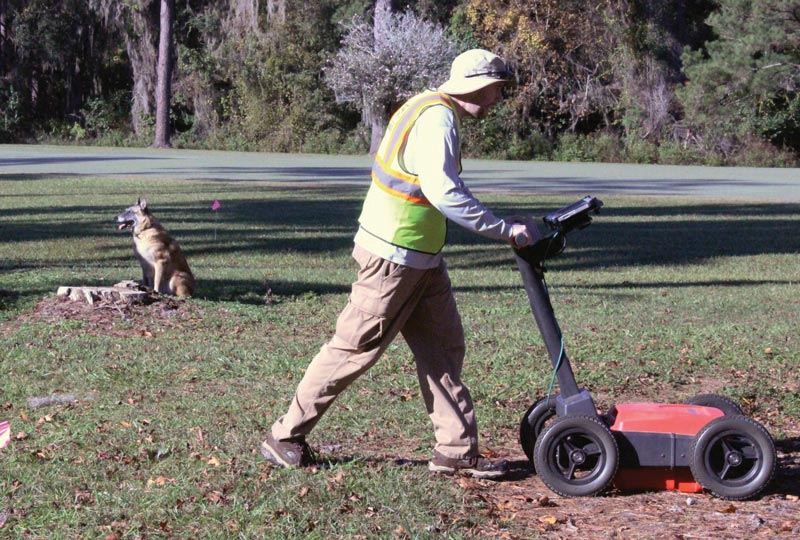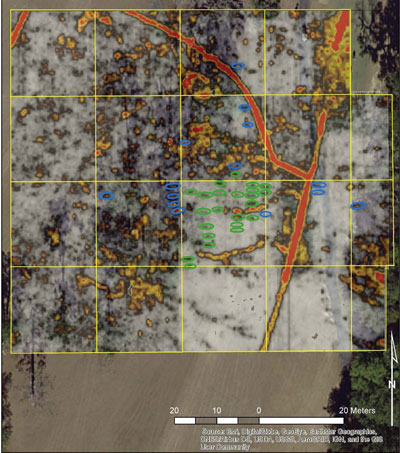Problem A: Damage to outside wall of tire on mower

Location: Dubuque, Iowa
Equipment: Gang mower
Problem B: Ground-penetrating radar and cadaver dog on fairway and rough

Location: Tallahassee, Fla.
Turfgrass variety: Bahiagrass
Scroll down for answers.
Problem A: Damage to outside wall of tire on mower
The damage to the outside tire wall on this five-gang reel fairway mower was observed by the golf course’s assistant superintendent. He was perplexed as to what could have caused the damage, as it was on the side of the tire that faces inward on the unit, which would have largely protected it from damage from rocks, tree limbs or other objects on the course.
When he asked the superintendent what he thought it was, the superintendent suspected it was most likely teeth marks from a mouse or rat. Upon inspecting the area where the unit was stored, they found mouse droppings. As it turns out, rodents often chew tires, but not for sustenance as one might assume. To reduce the length of their constantly growing incisor teeth, rodents need to “sharpen” them regularly, which they do by gnawing on hard surfaces like tires and, specific to this case, the raised lettering on tires. This mouse was caught, but the crew did not check it for black teeth, so they cannot be certain this saga is truly over.
Photo submitted by Gerry Lange, superintendent at Bunker Hill Golf Course in Dubuque, Iowa.
Problem B: Ground-penetrating radar and cadaver dog on fairway and rough
 The above photo shows what would be considered an unusual sight on most golf courses — someone using a ground-penetrating radar with a cadaver dog nearby. At this facility, their presence had nothing to do with agronomy. Instead, this was part of a historic-preservation effort.
The above photo shows what would be considered an unusual sight on most golf courses — someone using a ground-penetrating radar with a cadaver dog nearby. At this facility, their presence had nothing to do with agronomy. Instead, this was part of a historic-preservation effort.
This golf course, located in Tallahassee, Fla., sits in a historically rich part of the state. It was constructed in 1915 in a part of the city that was originally home to Native American settlements, Spanish explorers and colonial settlers. From the 1830s through the Civil War, it was home to a large agricultural plantation. When reports about potential unmarked graves from a former African American cemetery began to surface, the National Parks Service offered to investigate. The organization began a geophysical survey of the area using ground-penetrating radar and two dogs trained to detect human remains. Dogs have previously been used to successfully investigate historic burial sites containing remains up to 3,000 years old.
The radar data showed the presence of what is believed to be 40 graves near the club’s seventh hole. Most of the area is being maintained, but it’s in a part of the course that is out of play to golfers. The National Parks Services’ work at this golf course serves as a model for the proper study, documentation and memorialization of previously unrecorded grave sites found in urban areas.
Photo submitted by Chase Brown, superintendent at Capital City Country Club in Tallahassee, Fla., and a five-year GCSAA member.
John Mascaro is the president of Turf-Tec International.